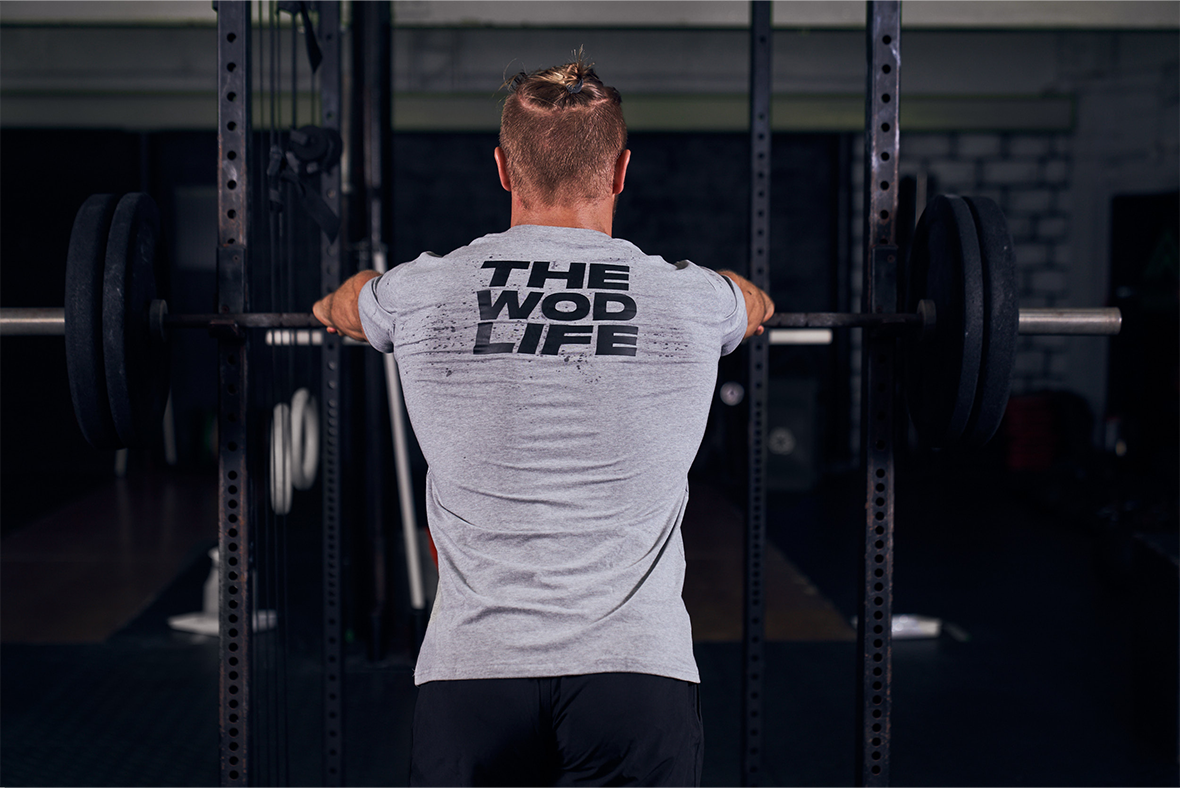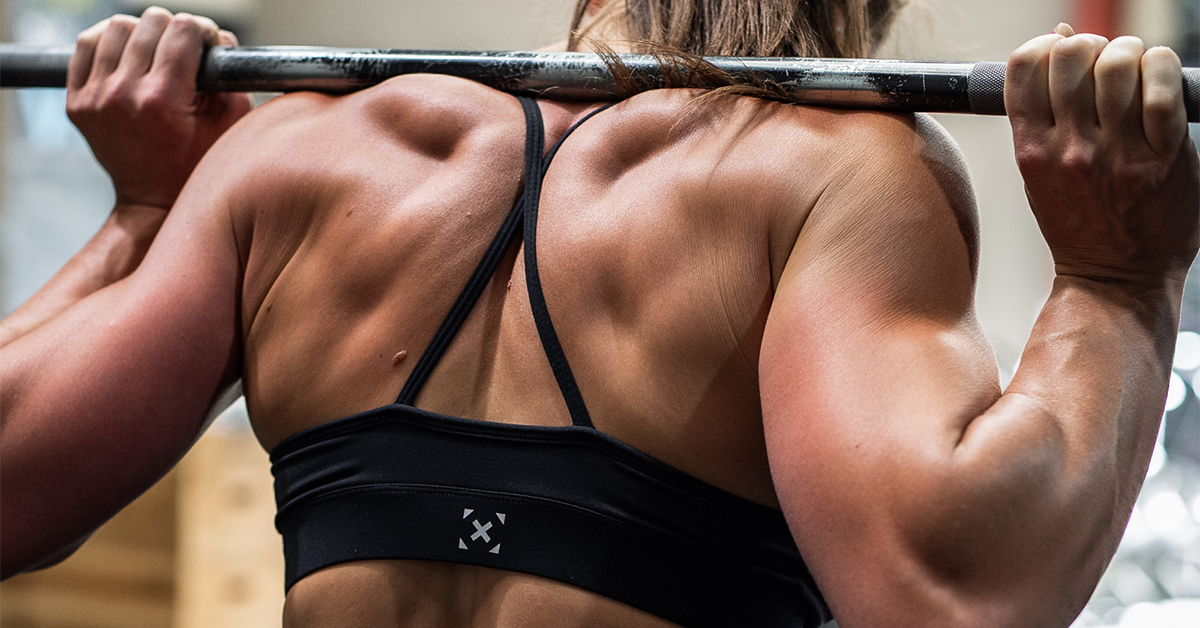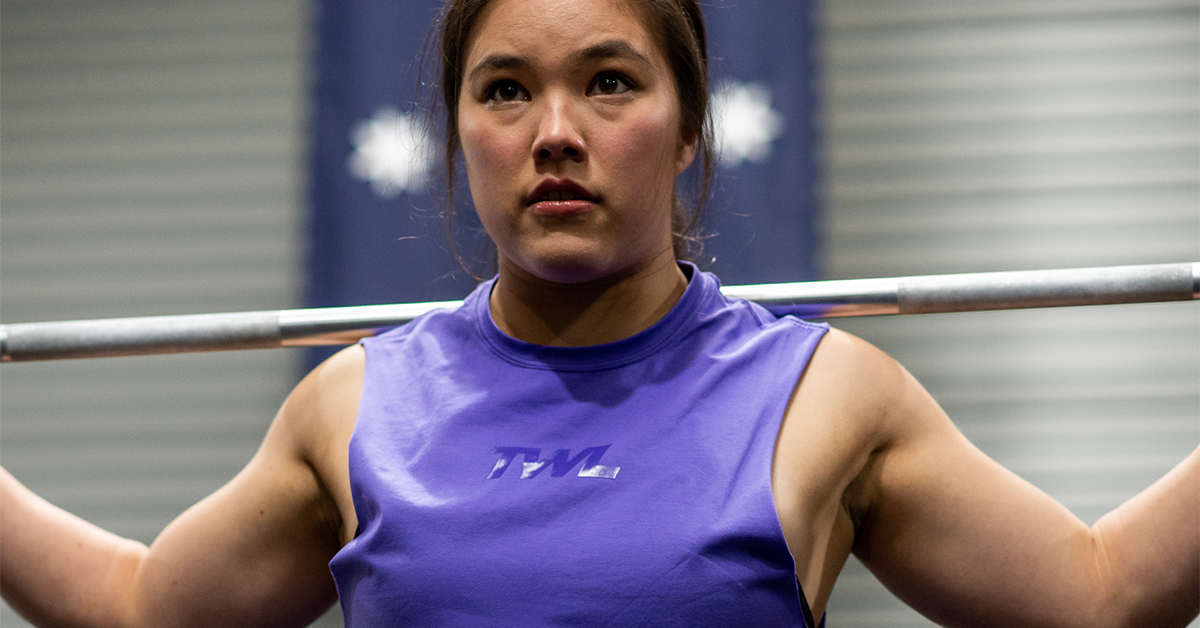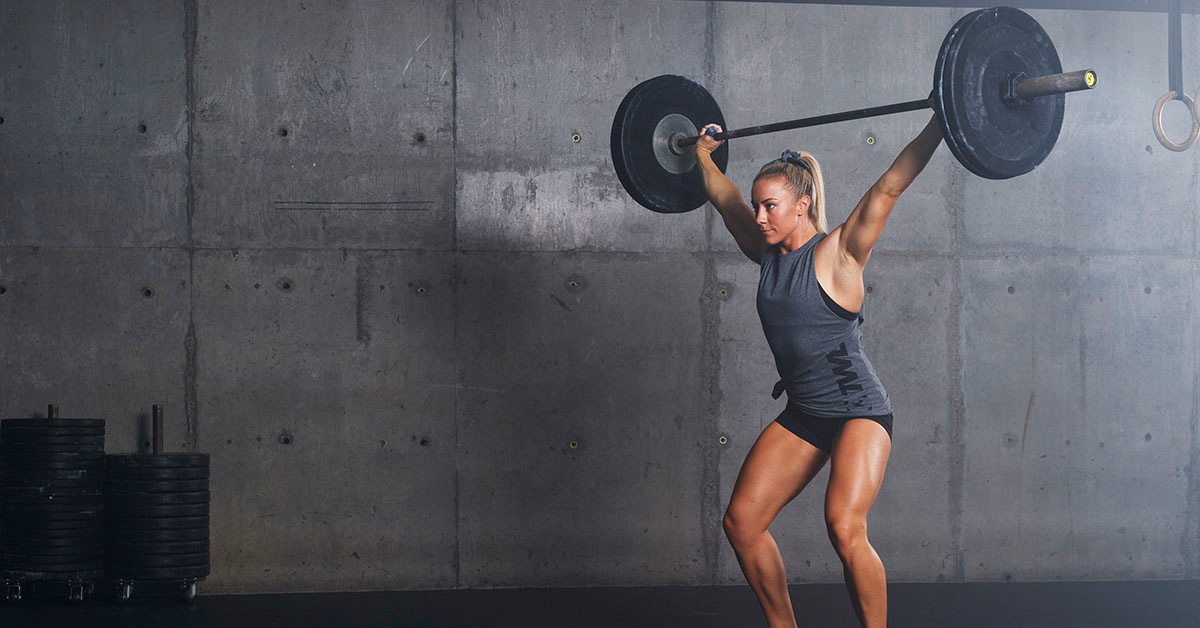When you take the barbell out of the rack for your next set of back squats, where exactly should it rest on your back? This is going to be important in helping you maintain the right positioning and squat heavier weights safely. Let’s jump right in and talk about your back squat bar position.
Back Squat Bar Position: Where Should the Barbell Be?
Before we can continue, we need to make the important distinction between high-bar vs low-bar squats. Both are back squats, but the barbell rests in slightly different places. This means that your form is going to change a little bit.
Bar Positioning for High-Bar Squats
In high-bar squats, the bar sits on the meaty part of your traps, where there’s some cushioning. You’re able to keep your torso more upright, and your gaze should be either straight ahead or slightly down. This is the more common placement and the one you’re likeliest to see in functional fitness gyms. Let’s compare that to…
Bar Positioning for Low-Bar Squats
In this case, the bar rests a few inches lower on your posterior deltoids, which is your mid-shoulder. Because the bar is lower on your back, your torso bends forward more, compared to a high-bar squat. Athletes who squat like this typically look down at the ground more. One benefit of low-bar squats is that they’re usually easier for people with poor squat mobility. And because you can sometimes lift more weight this way, powerlifters commonly rely on it.
Shop Now
Which Back Squat Bar Position is Right for You?
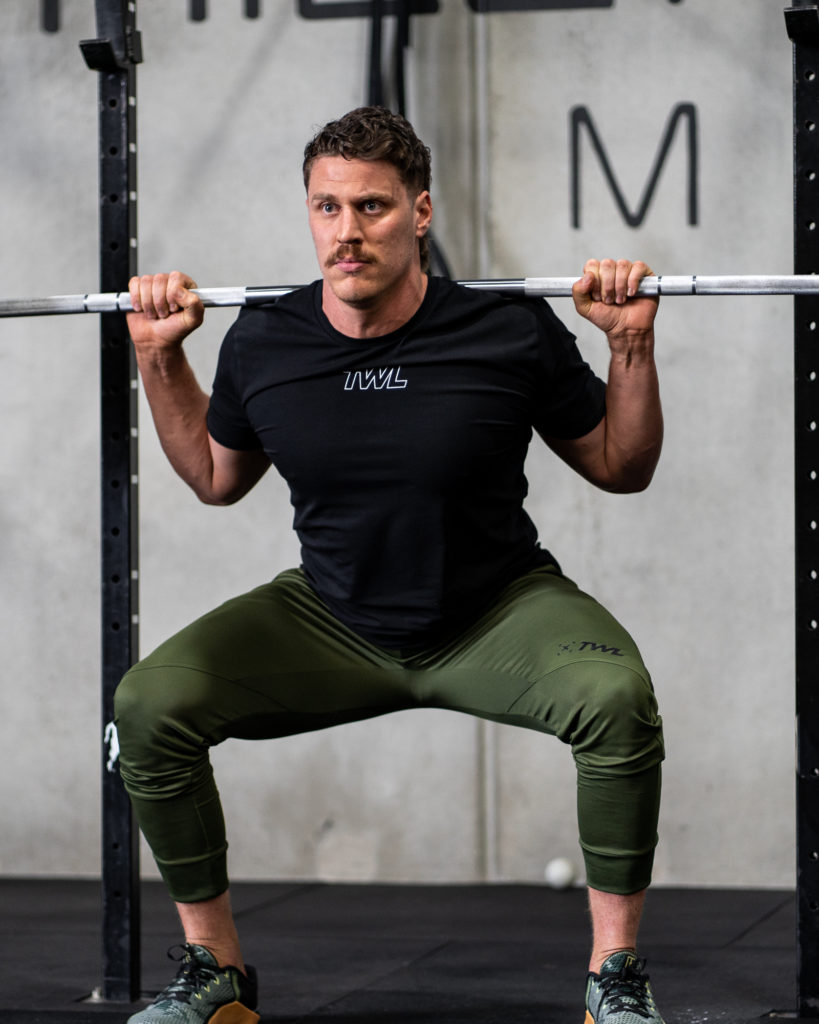
This isn’t a matter of right versus wrong, but rather which one is better for you. We suggest you start with high-bar squatting because this is the standard in functional fitness, bodybuilding, and usually, Olympic weightlifting.
Once you get a feel for this, try a low-bar squat. Yes, it’s going to feel very weird at first — almost like you’re going to drop the barbell. Give your body a chance to get used to it, first. Especially if you’re struggling with mobility, you might find this better for you. (Do keep in mind, though, that you shouldn’t use low-bar squats as a bandage for poor mobility. Get to the root of the problem and address it.) Or if powerlifting is your jam and lifting big weights is the goal, low-bar squats might be a better fit.
One isn’t better than the other. Take a step back and consider your own comfort as well as your goals. Remember to adjust your gaze and torso alignment properly, and gear up to lift safely with the right weightlifting shoes and knee sleeves. Quality over reps, always!
Which back squat bar position do you prefer?

